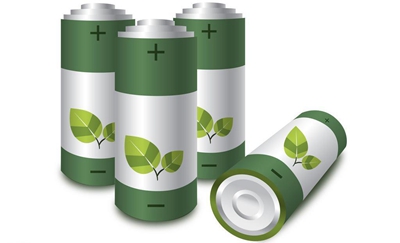

 |
Leaves become batteries! University of Maryland recently invented a new environmental friendly battery with oak leaves and some sodium.
Researchers first bake the oak leaves under 1,000 degrees Celsius till they carbonize, then put them in sodium. The back of oak leaves are covered with pores which were used to suck up water now are absorbing electrolyte of sodium. While the front of the leaves has turned into carbon in nanostructure which can take in sodium carries electric charge. Hence the whole process forms the positive and negative sides of the sodium battery.
The interesting thing is that sodium-sulfur battery and lithium battery came out to the market almost the same time. Even though sodium-sulfur battery has a higher efficiency, its battery cycle life is much shorter than lithium battery due to its undesirable electrode materials. Many scientists have been working on this issue for a very long time.
Leaves are very common in daily life. According to the researchers at University of Maryland, they also tried with wood fiber as a material for sodium battery. It turned out leaves work for the best based on its shape and structure. Researchers now are planning to use different types of leaves for battery-making, hoping to find the best in thickness, structure and elasticity as electrical energy storage.
Researchers of the University do plan to commercialize battery made of leaves just yet. Their research result will be published on the next issue of ACS Applied Materials & Interfaces.
 Have you ever taken these beautiful subways in China?
Have you ever taken these beautiful subways in China? Chinese beauties, foreign models meet in Chengdu
Chinese beauties, foreign models meet in Chengdu Awesome! Aerial pictures taken on J-11 fighter
Awesome! Aerial pictures taken on J-11 fighter A foreign girl explains what China should be proud of
A foreign girl explains what China should be proud of Chinese navy's air-cushioned landing craft in pictures
Chinese navy's air-cushioned landing craft in pictures Chinese pole dancing master opens class in Tianjin
Chinese pole dancing master opens class in Tianjin Splendid Sichuan after snow
Splendid Sichuan after snow College girl of Vancouver crowned Miss Chinese Int'l 2016
College girl of Vancouver crowned Miss Chinese Int'l 2016 Pentagonal Mart becomes the largest vacant building in Shanghai
Pentagonal Mart becomes the largest vacant building in Shanghai Top 20 hottest women in the world in 2014
Top 20 hottest women in the world in 2014 Top 10 hardest languages to learn
Top 10 hardest languages to learn 10 Chinese female stars with most beautiful faces
10 Chinese female stars with most beautiful faces China’s Top 10 Unique Bridges, Highways and Roads
China’s Top 10 Unique Bridges, Highways and Roads Unfair to blame Hollywood racism on China
Unfair to blame Hollywood racism on China 95% of projects on financing platform found to be fake probe
95% of projects on financing platform found to be fake probe 'Strictest’ asset reporting system still leaves out too much experts
'Strictest’ asset reporting system still leaves out too much experts The loss of ‘The Voice’ proves Chinese TV needs to stand on its own two feet
The loss of ‘The Voice’ proves Chinese TV needs to stand on its own two feetDay|Week